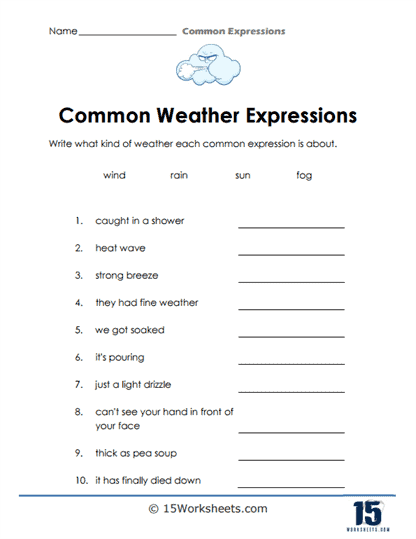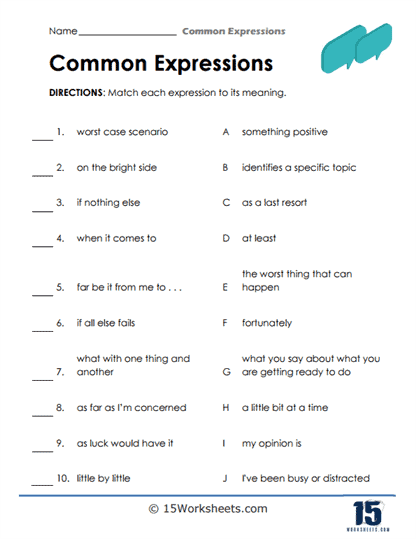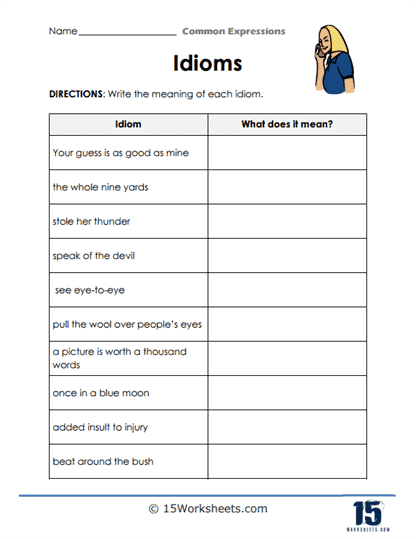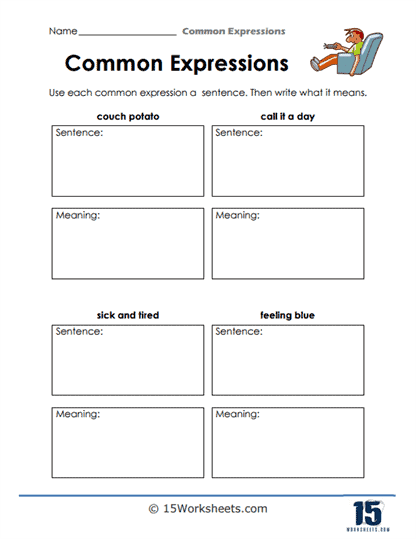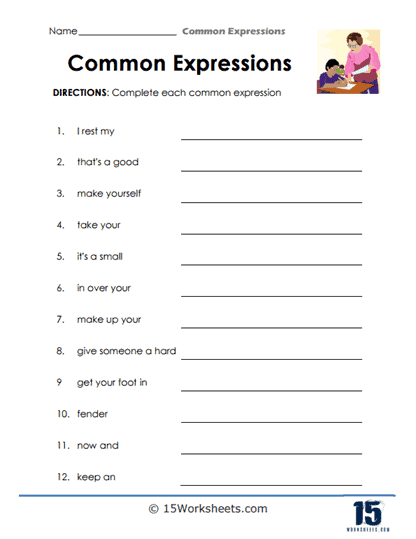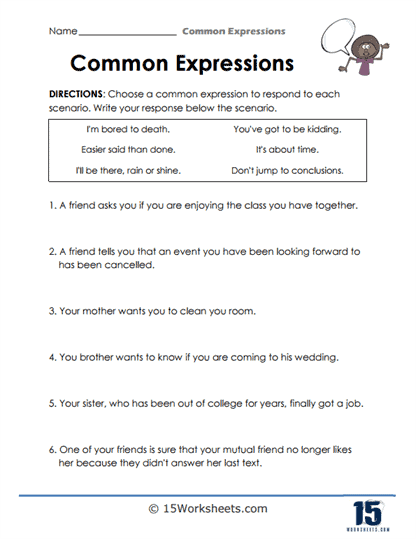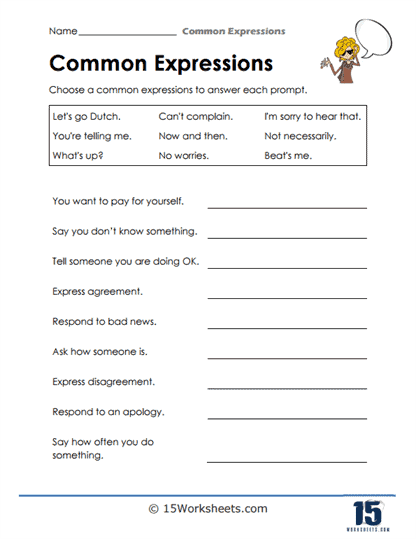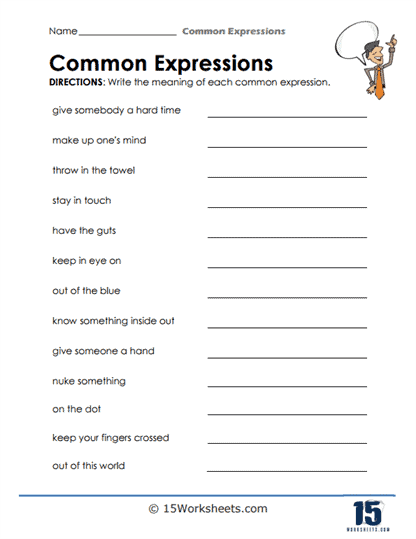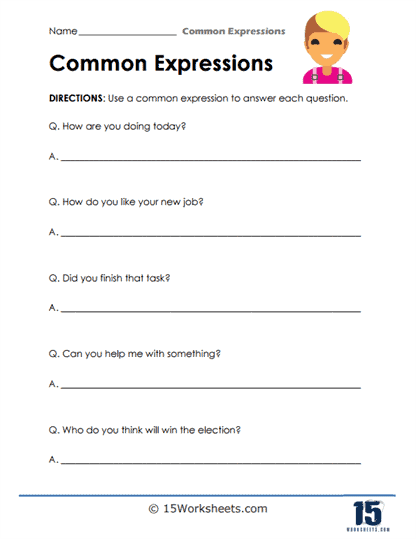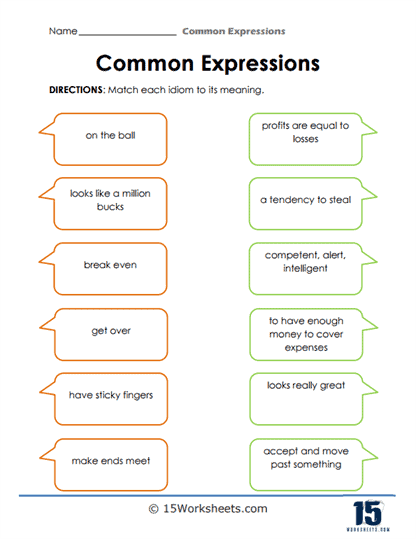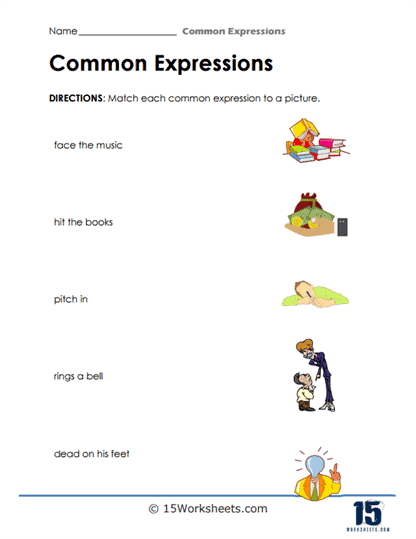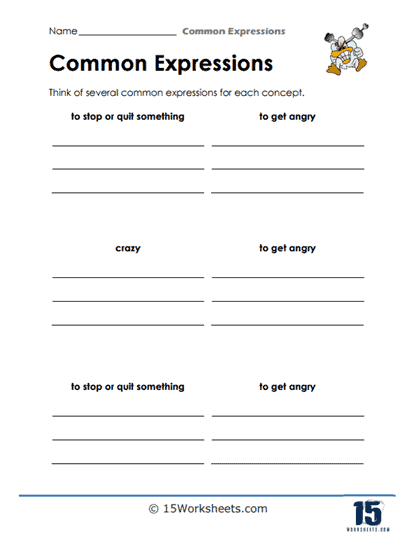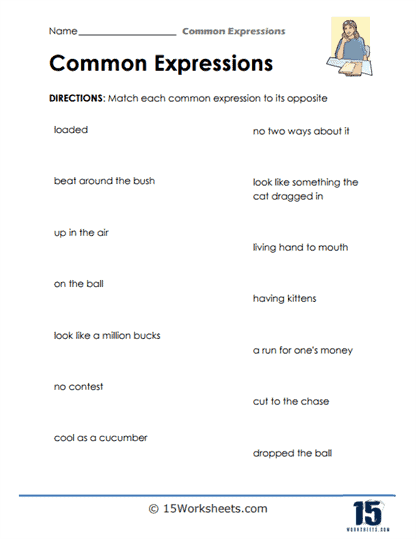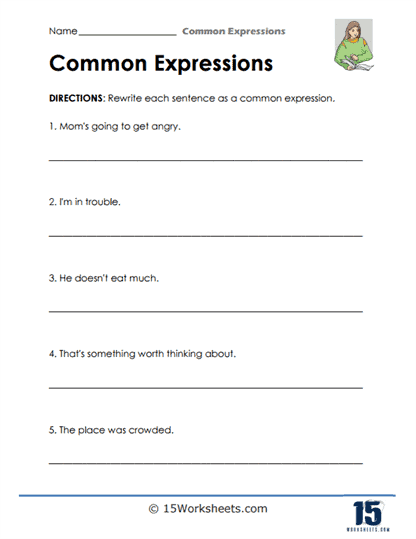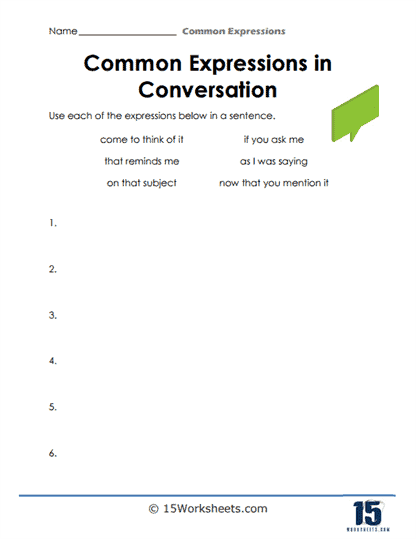Common Expressions Worksheets
All About These 15 Worksheets
These common expressions worksheets aim to help students in their fluency on common idiomatic expressions in English. Idioms are phrases or expressions whose meanings cannot be inferred from the literal definitions of the words used.
Through these worksheets, students will:
- Understand the common weather expressions, and other idioms that are typically used in conversations or writing;
- Explain the meaning of each common expression or idiom presented in the exercises;
- Construct their own sentences using common expressions and idioms;
- Be adept in using common expressions to initiate conversations or respond to them in day-to-day communication;
- Come up with their own common expressions that fit certain scenarios;
- And rewrite sentences to include common expressions in them.
These worksheets on common expressions in English are an essential tool for students to improve their language skills and writing proficiency. These worksheets provide students with a clear understanding of common idiomatic expressions and their meanings, how to identify them in sentences, and how to use them correctly in sentences and day-to-day scenarios or communication.
What are some Common Expressions in English?
There are many common expressions in English, and they are used frequently in everyday conversations. Here are some examples:
- “Break a leg” – when you want to wish someone good luck
- “Bite the bullet” – to endure a painful or difficult situation
- “Cost an arm and a leg” – very expensive
- “Hit the nail on the head” – to be accurate or correct
- “Once in a blue moon” – very rarely
- “Under the weather” – feeling ill or unwell
- “Piece of cake” – used to describe something that is very easy
- “On the ball” – being alert or paying close attention
- “A dime a dozen” – when something is very common and easily obtainable
- “Spill the beans” – to reveal a secret
These are just a few examples of the many common expressions used in English. Learning these expressions and their meanings can help students to better understand native speakers, and to communicate more effectively in everyday conversations.
Why do students need to learn Common Expressions in English?
Studying common expressions or idiomatic expressions is beneficial to students for several reasons:
- Improved comprehension – Knowing common expressions and idioms helps students to better understand native speakers and to decipher the meaning behind non-literal expressions.
- Enhanced communication – The use of idiomatic expressions adds nuance and depth to language, allowing students to express themselves more effectively and to convey their intended meaning more precisely.
- Cultural awareness – Many idiomatic expressions are deeply rooted in the cultural context of a language, providing insight into the values, beliefs, and traditions of a community.
- Expanded vocabulary – Learning idioms and common expressions helps to expand students’ vocabulary and to improve their ability to use language creatively and expressively.
- Improved writing skills – The use of idioms and common expressions can make writing more engaging and interesting, providing a way to connect with readers on a deeper level.
In summary, studying common expressions is beneficial to students as it improves their comprehension, communication skills, cultural awareness, vocabulary, and writing abilities. By incorporating idiomatic expressions into their language learning, students can become more proficient in English as they strive to be more effective communicators.

